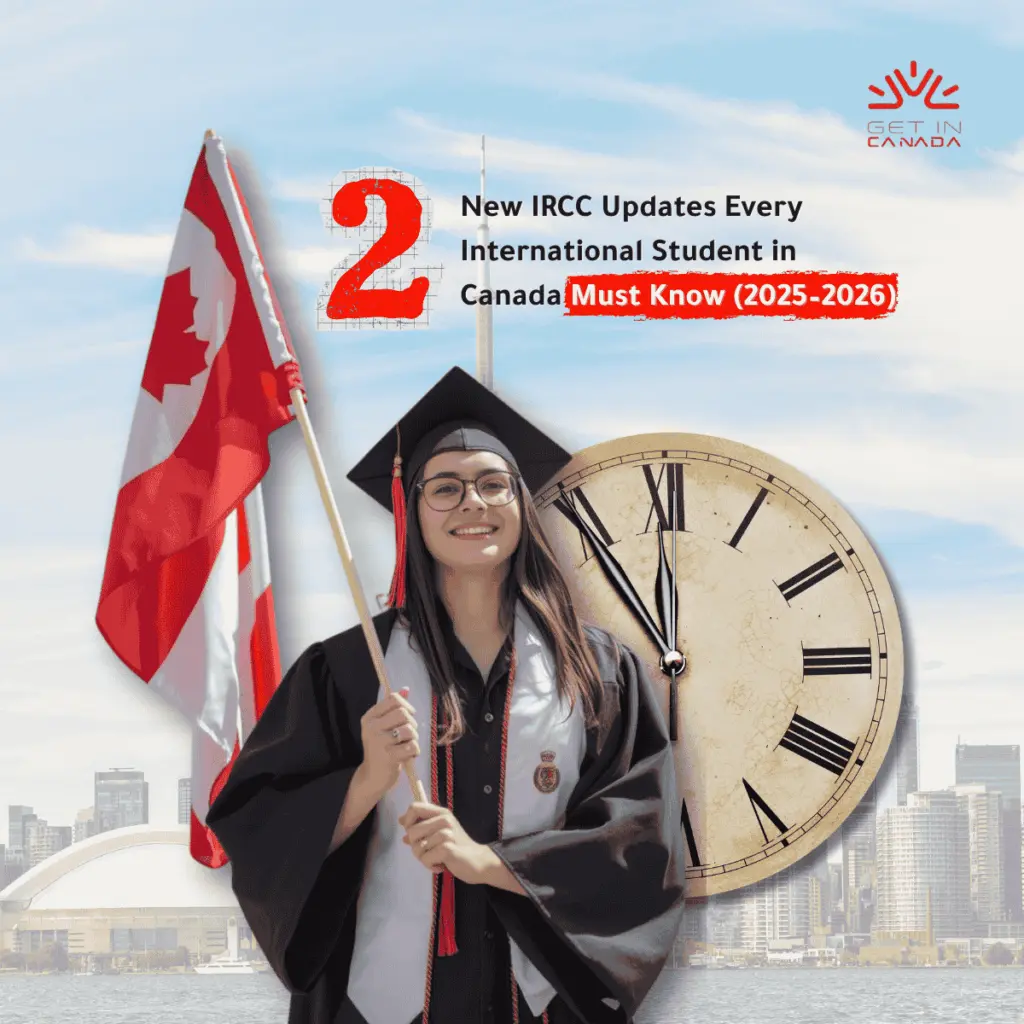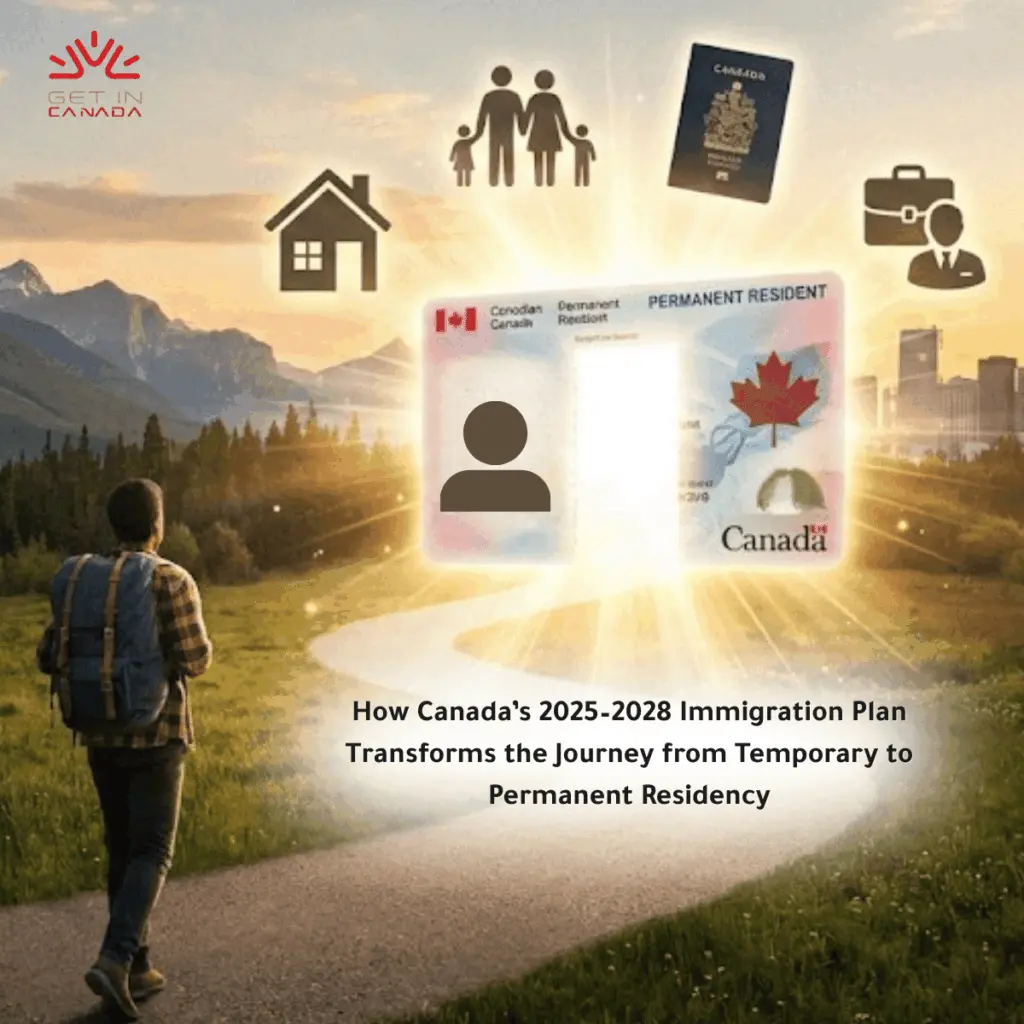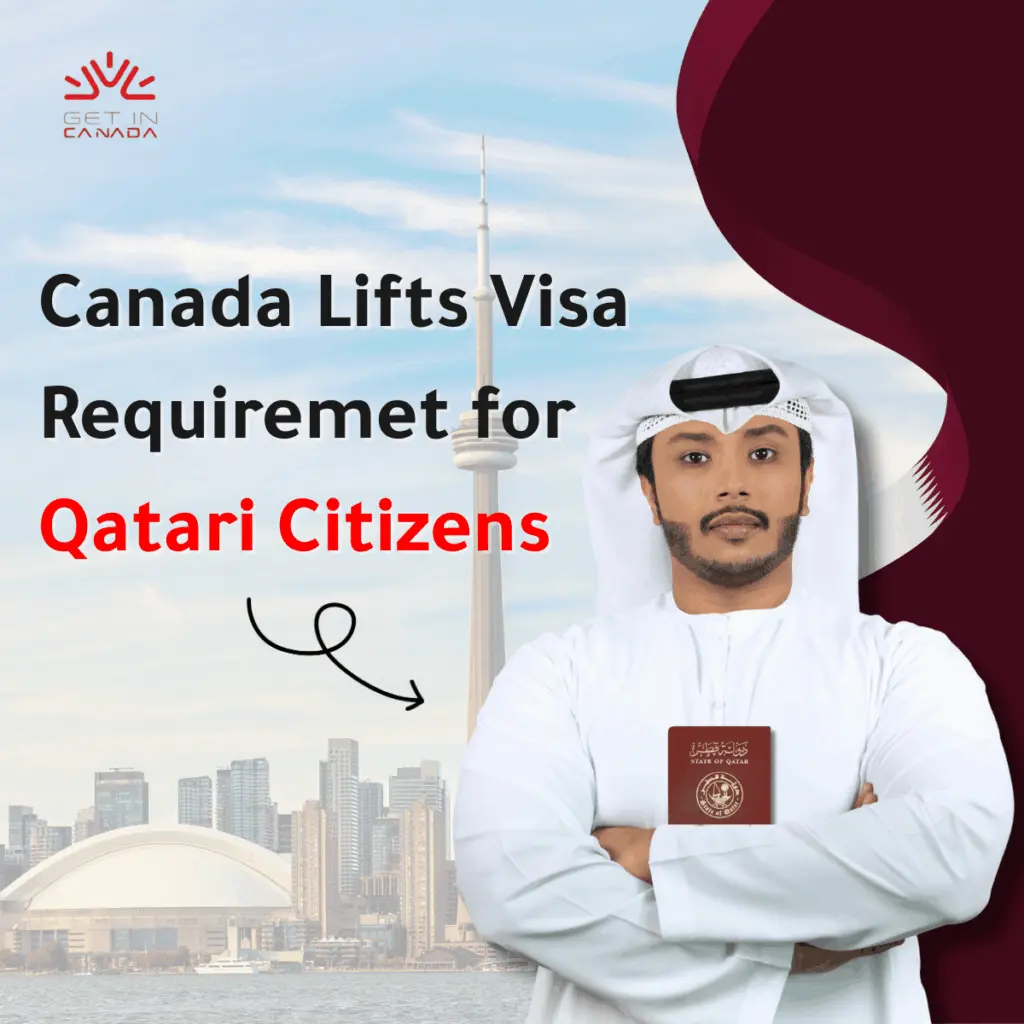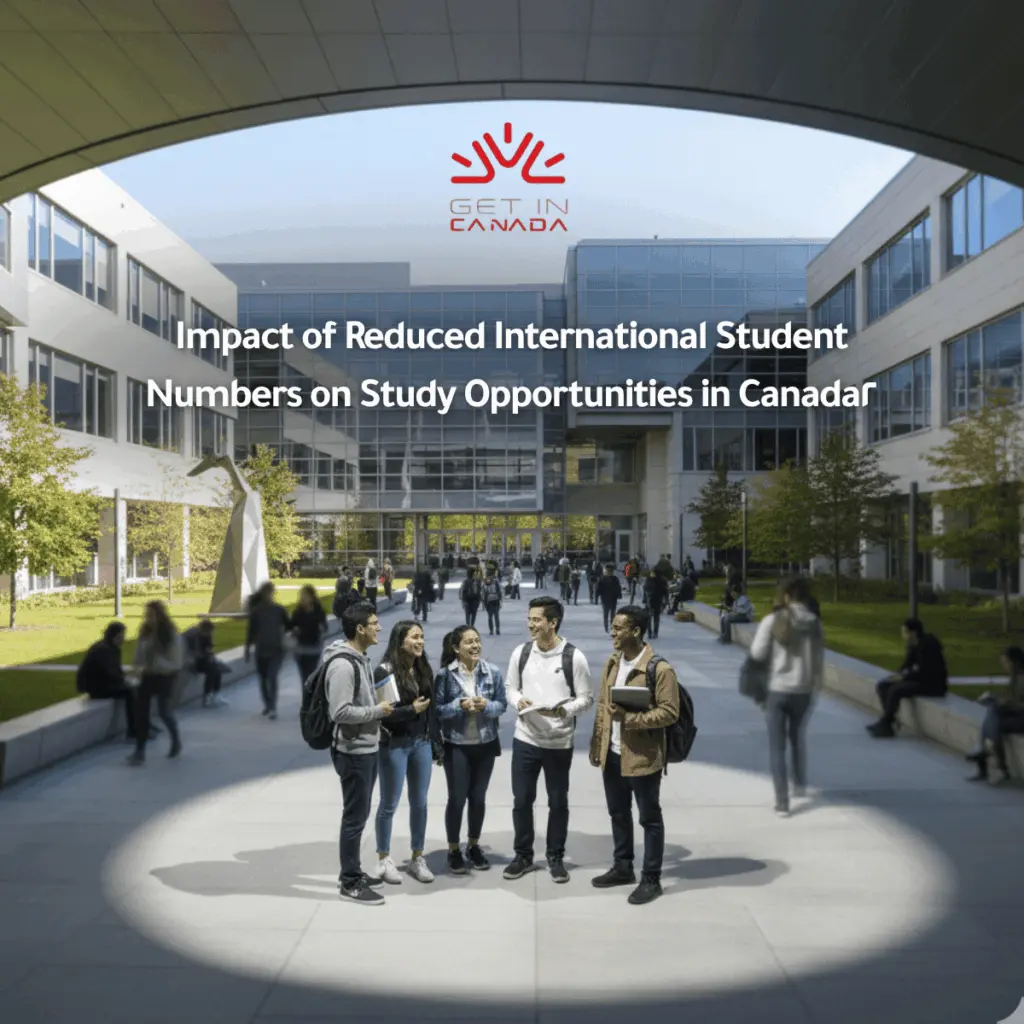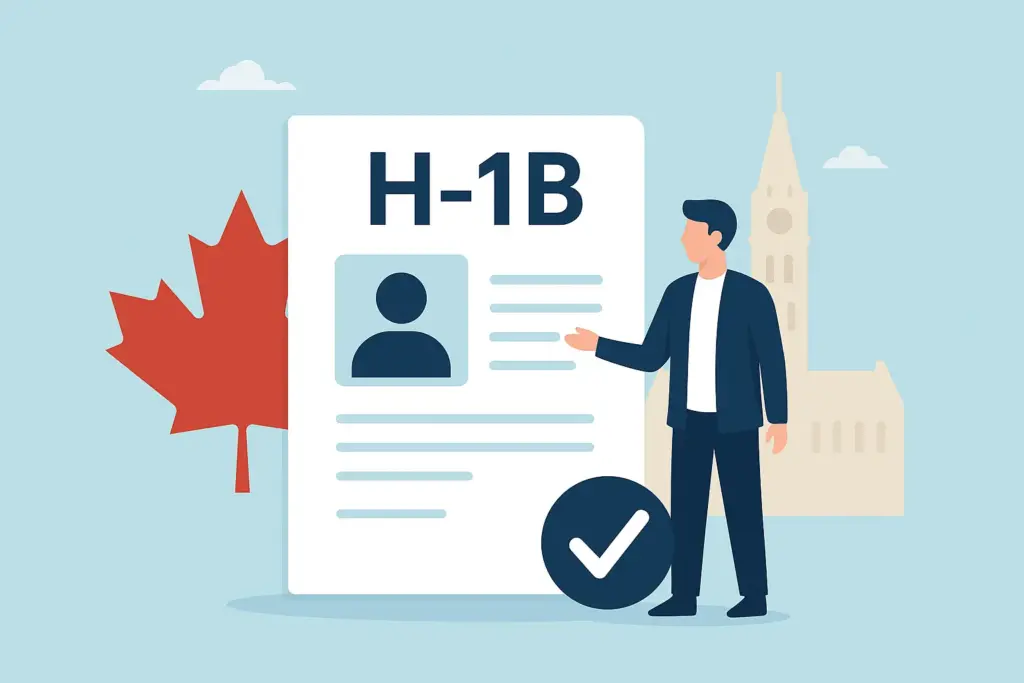Immigration to Canada as an academic professional or student
Exploring the prospect of studying or working in Canada as an academic professional opens the door to a realm of possibilities. In this blog, we delve into the intricate process of immigration, guiding academic professionals and students through the steps required to establish themselves in Canada. From eligibility criteria and educational accreditation to navigating pathways like Express Entry and Provincial Nominee Programs, join us in unraveling the journey toward fulfilling academic aspirations in the dynamic landscape of Canada.

Eligibility Criteria for Canada Student Visa
- Vaccination Status:
- Qualify as a fully vaccinated traveler.
- Accepted vaccines include AstraZeneca/COVISHIELD, Bharat Biotech Covaxin, etc.
- Academic Acceptance:
- Acceptance by a designated learning institute (DLI).
- Financial Capability:
Demonstrate adequate funds for:
- Tuition fees.
- Living expenses for yourself and accompanying family members.
- Return transportation for yourself and accompanying family members.
- Clean Background:
- Provide a police verification certificate to prove a clean background.
- Health Checkup:
- Undergo a health checkup and provide a medical certificate indicating good health.
- Visa Interview:
- Convince the visa officer during the interview of your intent to leave Canada upon completing your studies.
Documents Required for Canada Student Visa
- Valid Passport:
- Ensure your passport is valid for the intended stay in Canada.
- Acceptance by Designated Learning Institution (DLI):
- Obtain the acceptance letter from the university/institute.
- Proof of Funds:
- Demonstrate financial capacity with various options, including bank accounts, GIC, loans, and more.
- Minimum bank balances vary based on location and accompanying individuals.
- Passport Size Photographs:
- Provide two passport-sized photographs meeting specified criteria for offline applications.
- For online applications, submit a digital copy adhering to size and format guidelines.
- Immigration Medical Examination (IME):
- Undergo a mandatory medical examination with impaneled doctors.
- Schedule the exam in advance to allow for document validation.
- English Language Proficiency Exam Score:
- While not mandatory for application, having a valid language proficiency score (TOEFL, IELTS, etc.) is recommended.
- Statement of Purpose:
- Submit an essay explaining the purpose of your trip and your understanding of student responsibilities.
- Credit Card:
- If applying online, use a credit card for the CAD 150 application fee payment. Debit cards are not accepted.
Additional Tips:
- If applying online, access to a digital scanner is needed for document uploads.
- During a personal interview, be prepared to provide additional documents related to academic and financial status, including transcripts, test scores, and proof of intent to leave Canada upon course completion.
Canada Student Visa Fees
The fee for a Canada student visa is CAD 150, equivalent to 9,317 Indian Rupees based on the current exchange rate in July 2023. As exchange rates fluctuate, it is recommended to verify the rate during your visa application.
Canadian visa applications are accessible online and offline, with processing fees payable through online transactions (credit card), offline methods (demand draft at the High Commission of Canada), or cash at the Visa Application Centre (VAC). Payment must accompany the application submission, and a fee receipt is required for online payments. Demand Drafts should be in favor of the High Commission of Canada in Indian rupees, while VACs only accept cash.
Note that the mentioned visa fee does not cover VAC service charges, which vary by region. Additional service charges apply, and a receipt will be issued for each payment—retain these receipts as proof of payment.
Upon visa application submission, a biometric fee of CAD 85 is required, separate from the regular visa fee. This fee is to be submitted before undergoing the biometric process at a Visa Application Centre.
Canada Student Visa Processing Time
The processing time for a Canada Student Visa refers to the duration taken to assess and decide on a visa application. It commences when the applicant applies and concludes on the day the final decision is made. Typically, the processing time for a Canada Student Visa is approximately 6 weeks. Applicants, whether applying online or via paper. Additionally, for students applying through the SDS route, the processing time after biometrics is expedited to 20 calendar days.
What are the steps of applying for a study visa?
In the following, we will discuss the steps you have to follow to apply for a study visa:
Step 1: Understand the Requirements
To successfully apply to a Canadian educational institution, grasp the diverse requirements for schools and courses. Analyze the rules for the study permit application process, considering only recognized schools and approved study periods. Ideally, start planning for your Canadian study permit at least a year in advance.
Common requirements include an updated passport, language proficiency, and proof of financial capability for tuition and living expenses.
Step 2: Choose your Course and Institution
Ensure your chosen institution is a Designated Learning Institution (DLI). Finalize a major course, keeping the flexibility of the Canadian academic setup in mind.
Step 4: Apply to Universities
Contact shortlisted universities, obtain application packs, and submit them. Compare options, consider application fees, and apply strategically. Provide accurate information and wait for acceptance.
Step 5: Apply for a Study Permit
With an acceptance letter, apply for a Canada Study Permit. Include required documents like a passport, proof of finances, and possibly a medical exam or custodian declaration for minors. Explain your goals in a letter of explanation.
Step 6: Travel Time
Once processed, plan your travel to Canada based on the permit’s start date. Schedule a biometric appointment to avoid delays.
Step 7: Study Time
The immigration officer will verify documents at the port of entry, marking the final step before embarking on your journey as an international student in Canada.
Find out if you are eligible to get in Canada →
Qualifications for Immigrating to Canada as a Professor or Lecturer
The NOC code facilitates immigration to Canada for qualified university professors and lecturers, requiring the certification of credentials by Canada.
The specific paperwork and prerequisites for this process may change but consistently align with the educational criteria on the Canadian government’s NOC list. About university lecturers and professors, the following criteria apply:
- University professors are mandated to possess a doctorate in their field of study.
- University instructors must have a master’s degree in their area of expertise.
- Planners aspiring to migrate should typically be members of the Institute of Planners in Canada.
- Immigrants from universities seeking roles as professors and lecturers in Canada necessitate a specified amount of job experience.
A continuous full-time employment record of at least one year, equating to 1,560 hours overall or 30 hours per week or more within the last ten years, is required. Ideally, applicants would have accrued significantly more experience, considering factors such as age.
Eligibility for Immigration as a University Lecturer and Professor in Canada
Upon meeting the academic and professional criteria for immigration as a university professor or lecturer in Canada, the initial stage of the immigration process should be explored.
Step 1: Initiating a Career in Canada as a Professor or Lecturer
To successfully immigrate as a university professor or lecturer, creating an Express Entry profile is the first essential step. However, this is just the beginning, and the real work starts in crafting a comprehensive profile aligned with the criteria set by Canadian Immigration, Refugees and Citizenship Canada earning the necessary Comprehensive Ranking System (CRS) points.
Step 2: Applying for Express Entry and Permanent Residency
After creating an Express Entry profile, wait for an Invitation-to-Apply (ITA) from Immigration, Refugees and Citizenship Canada (IRCC). Upon receiving the ITA, you can apply for permanent residence. Permanent Residency in Canada brings benefits such as working and living in the country, unrestricted entry and exit, access to Canadian education, healthcare, social security benefits, and eligibility for citizenship after four years.
Step 3: Active Participation as a University Professor and Lecturer
While your Express Entry profile is active, make a substantial impact by providing necessary supporting documentation. Without the right documentation, success is unlikely.
Step 4: Obtaining Provincial Nomination
With an active Express Entry profile and verified credentials, work on obtaining provincial nomination. This nomination enhances your CRS score by 600 points, significantly improving your chances of successful immigration. Living and working in the nominating province for two years results in immediate Canadian Permanent Residency.
Step 5: Invitation to Apply for a Job
Receive an invitation to apply for a job through the Express Entry program, either directly from federal selection, provincial nomination, or acceptance of a formal job offer in Canada. This marks a crucial step in the immigration process to become a university professor or lecturer in Canada.
Requirements and Responsibilities for Immigrating as a University Professor or Lecturer in Canada
Embarking on the journey to immigrate as a university professor or lecturer to Canada involves engaging in various activities and assuming specific obligations and commitments:
1. Teaching Responsibilities:
Conducting one or more academic courses for both undergraduate and graduate students.
2. Instructional Variety:
Engaging in diverse teaching methods, including lab sessions, leading discussion groups, and delivering lectures.
3. Assessment Duties:
Preparing, administering, and grading exams, lab work, and reports to ensure comprehensive evaluation.
4. Guidance and Counseling:
Encouraging students to make informed choices regarding their academic and career paths.
5. Research Oversight:
Supervising graduate students’ research projects and guiding them on research-related matters.
6. Research Contributions:
Conducting research in the specialized field and publishing findings in academic journals or books.
7. Administrative Participation:
Involvement in academic committees addressing issues like degree requirements, curriculum design, and other administrative tasks.
8. Guest Speaking Roles:
May serve as speakers and guest lecturers within their universities.
9. Urban Planning Coordination:
Overseeing and coordinating the activities of urban planning specialists, showcasing a broader role within the academic landscape.
Engaging in these multifaceted roles demonstrates the depth of commitment and contribution expected from university professors and lecturers immigrating to Canada.
Steps to work and live as a professor or lecturer in Canada
Let’s discuss the steps in the following:
Step 1: Verify Your immigration eligibility
Evaluate your eligibility by taking our free assessment, considering over 80 ways to enter Canada with a visa. Based on your unique circumstances, we can guide you on the most suitable course of action.
Step 2: Obtain Canadian accreditation for Your education
Get your credentials certified outside of Canada and ensure recognition within the country for living and working as a university professor or lecturer. An Educational Credential Assessment (ECA) validates the conformity of your degree, diploma, or certificate to Canadian standards.
Step 3: Begin the immigration process and obtain a visa for Canada
Explore various paths for immigration as a university professor or lecturer, focusing on the top 4 options:
1. Express Entry System:
Utilize the quickest and most efficient Express Entry (EE) procedure, calculating your immigration points using the Comprehensive Ranking System (CRS).
2. Provincial Nominee Program (PNP):
Consider the Provincial Nominee Program, where having a valid employment offer for at least a year is crucial. Each province has unique labor requirements.
3. Rural and Northern Immigration Pilot (RNIP):
Explore eligibility under the RNIP, especially in high-demand regions for university professors and lecturers.
4. Atlantic Immigration Pilot:
Check if you qualify under the Atlantic Immigration Pilot, focusing on the four Atlantic provinces with a valid job offer for at least a year.
Step 4: Apply to become a university lecturer or professor
While having a job offer can expedite the immigration process, it’s not mandatory. A valid job offer can make you earn additional points in the immigration system, increasing your chances of being invited to participate in the immigration process.
Note: The provided information is for guidance, and the latest details should be checked for accurate and up-to-date immigration procedures.
As we conclude this exploration into the immigration process for academic professionals and students aspiring to make Canada their home, it becomes evident that the journey is not just about crossing borders but about embracing opportunities for academic and personal growth. Navigating eligibility criteria, educational accreditation, and immigration pathways illuminates the path toward building a vibrant academic future in the diverse and welcoming Canadian landscape. May this guide serve as a compass for those embarking on this transformative journey, and may your endeavors in Canada be filled with success, learning, and the realization of your academic dreams.


